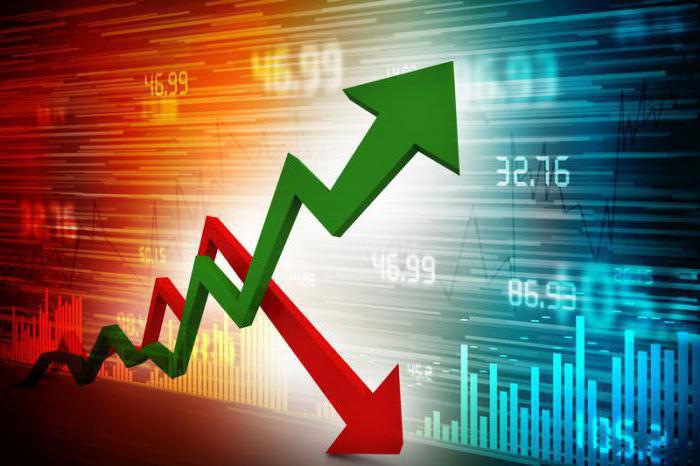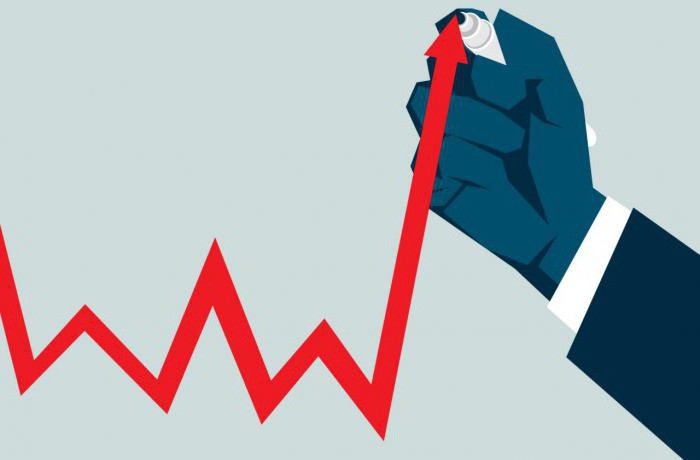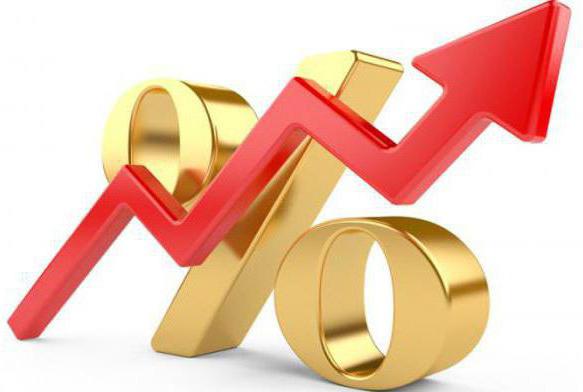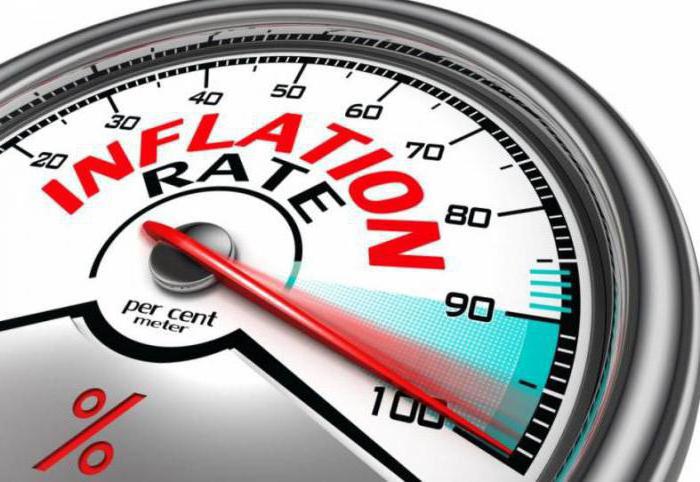Inflation is the process of raising prices for goods and services over time. To determine its level, the inflation index is used.
The concept of inflation. Appearance story
Inflation as a phenomenon in the financial system was known even in the ancient world. However, in those days it was different from the one we are seeing today. For example, inflation was caused by excessive minting of coins or the use of copper instead of precious metals in their manufacture. Such a process was commonly referred to as “coin corruption”. By the way, historians even managed to find data on the depreciation of the monetary unit of Ancient Rome sisterhood.

Until the middle of the last century, inflation was perceived by the population as a natural disaster. And only after the introduction of ubiquitous statistical accounting of the activities of business entities in the USA, Japan and many Western European states, inflation was controlled. At the same time, the ownership rights of producers were not infringed. In addition, the measures taken did not adversely affect the level of competition of goods and services in domestic markets. It should be noted that in addition to statistical control, the creation of a system of distributed price regulators played a large role in curbing inflation.
Inflation in the USSR
There was no inflation in the Soviet Union. Except for the so-called "deficit." The fact is that in the USSR there was such an organization as the State Price Committee under the Council of Ministers of the USSR. Its functions included regulating the relationship between producers and consumers. This happened by controlling the costs of production and profit.
This standardization was carried out by the Research Institute of Planning and Norms under the USSR State Planning Committee (NIIPiN). His tasks included the development of profit margins that would be scientifically substantiated. In addition, the institute worked on determining the norms of intermediate consumption, as well as other costs of various institutions and organizations, taking into account their regional, sectoral and technological features.
Inflation forecast
In order to accurately predict the future activities of the enterprise, it is necessary to evaluate not only its own internal resources, but also additional factors that are independent of the organization. These factors are a consequence of the characteristics of the external environment, but at the same time they have a great influence on the results of each manufacturer. These parameters include inflation, which can be predicted using the formula for calculating inflation.

General government bodies act as a source of macroeconomic information, which analyze and make forecasts regarding the economic and financial situation. In addition, they monitor trends in the exchange rate of the national currency, price increases, as well as assess the structure of the cost of goods and services not only in the country, but throughout the world. In the process of forecasting the financial and economic development of the enterprise, it is necessary to take into account inflationary changes. They have a significant impact on many aspects of the organization.
Inflation index
One of the main and obvious indicators of the depreciation of money is the inflation index. The formula by which it is calculated helps to determine the total increase in the value of goods and services in a certain period of time.It is determined by adding up the base price level at the beginning of the reporting period (taken equal to one) and the inflation rate for the considered interval. The inflation formula in this case is as follows: AIt= 1 + TItwhere
TIt - annual rate of inflation. This indicator characterizes the general increase in the price level during a given time period and is expressed as a percentage. In turn, this indicator is calculated using the inflation rate formula: TIt= (1 + TIm)12-1 where
TIm — the average monthly inflation rate, provided that it is uniform throughout the year.
When planning the company's annual budget, the following indicators should be taken into account:
1) inflation, changing over time. Here it is necessary to take into account the fact that inflation dynamics often do not coincide with currency fluctuations;
2) the possibility of including several monetary units in the budget;
3) heterogeneity of inflation. In other words, for different types of goods, services, resources, prices change in different ways and their growth rates may vary;
4) state regulation of the value of certain groups of goods and services.

Accounting for inflation in calculating the profitability of financial transactions
When calculating the required level of income from financial transactions, it is necessary to take into account the inflation factor. At the same time, the tools used in the calculations are designed to determine the amount of the so-called “inflation premium”, as well as the overall level of nominal yield. The presence in this calculation formula of the inflation rate allows the company to provide compensation for inflation losses, as well as obtaining the necessary level of net profit.

The calculation of the "inflation premium"
To calculate the required size of the inflation premium, the following formula is used:
Pi = P x TI,
where Pi is the amount of inflation premium for a specific period of time,
P is the initial value of the money supply,
TI - inflation rate for the considered time interval in the form of a decimal fraction.
The formula for accounting for inflation in determining the total necessary level of income from a financial transaction is as follows: Dn = Dr + Pi,
where Dn is the total nominal amount of the required income of the financial transaction. In this case, the inflation factor for the considered time period is taken into account.
Dr - the real amount of the required income from the financial transaction in the considered period of time. This indicator is calculated using simple or compound interest. The calculation process uses the real interest rate.
Pi - inflation premium for the period under review.
Calculation of the required profitability
To calculate the required rate of return on financial transactions, taking into account the level of inflation, the formula is as follows:
UDn = (Dn / Dr) - 1.
Here, UDn represents the necessary degree of profitability from financial transactions taking into account inflation in the form of a decimal fraction, Дн - the total nominal amount of the required income of the financial transaction in the considered period of time, Др - the real amount of the necessary income from the financial transaction in a given time interval.
Accounting for inflation using foreign currencies
It must be emphasized that it is rather difficult to make an accurate forecast regarding the inflation rate using the formula. In addition, this process is time-consuming, and the result largely depends on the impact of subjective factors. Therefore, you can use another effective financial management tool.
It consists in converting the money that will be received in the form of income from financial transactions into one of the main and stable world currencies. This will completely eliminate the inflation factor. In this case, the course applicable at the time of the calculation is used.

Fisher's formula
Fischer’s inflation formula was first published in his 1911 issue of The Purchasing Power of Money. Until today, it is a guide for those specialists in the field of macroeconomics who are convinced that its growth depends on the amount of money in circulation. The author of the formula is the American economist and mathematician Irving Fisher. The essence of the formula is the definition and attitude to credit funds, interest and crisis phenomena. It looks like this: MV = PQ,
where M is the volume of money supply that is in circulation, V is the velocity of circulation of the mass of cash, P is the price, Q is the number of products and services sold. Fischer’s inflation formula is a macroeconomic ratio and still serves as one of the most important and used tools. In simple terms, this equation shows a directly proportional relationship between the price level of goods and services and their production volumes on the one hand, and the amount of money supply in circulation on the other. At the same time, the mass of cash is inversely proportional to the velocity of circulation of the total mass of cash.

Money offer in Russia
At the moment, the money supply turnover rate in the Russian economy shows a tendency to slow down. At the same time, sharp jumps in this indicator, as a rule, correspond to sudden changes in the ruble exchange rate relative to major world currencies. The slowdown in the circulation of money supply has two main reasons. The first is to slow down the gross domestic product. The second reason is an increase in inflation. In the future, this state of affairs may lead to a situation where the money supply becomes simply boundless.
Here it is necessary to return to the Fisher formula and emphasize one interesting detail. The money supply turnover rate is a consequence of the parameters of the equation. At the moment, there is no established methodology for monitoring this indicator. Nevertheless, the inflation formula itself, thanks to its simplicity and ease of understanding, has taken root in modern macroeconomic theory.
One of the main problems of the monetary policy of the leadership of the Russian Federation is a frivolous attitude to the high refinancing rate. This, in turn, is the reason for the fall in the level of industrial production and stagnation of the agricultural sector of the economy. Leading economists of the country understand the harmfulness of this approach.
 But today it is regrettable to note that government officials of the Central Bank and the Ministry of Finance, responsible for monetary policy, follow the interests of the monopolists. It is beneficial for these groups of entrepreneurs to maintain the current dispositions in the dynamics of price changes and their structure.
But today it is regrettable to note that government officials of the Central Bank and the Ministry of Finance, responsible for monetary policy, follow the interests of the monopolists. It is beneficial for these groups of entrepreneurs to maintain the current dispositions in the dynamics of price changes and their structure.